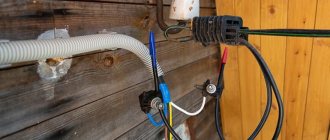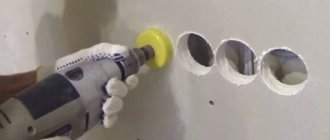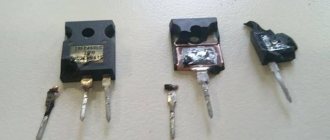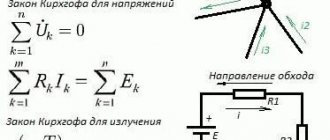We live in a rapidly developing world. The pace of life and human needs are increasing every day, regardless of the time of year, and in order to provide some of them, an industry such as construction is present in all areas of our lives. It's no secret that thanks to her we have shops, housing, places of work and recreation.
As a rule, most people believe that construction is a seasonal type of work and should be carried out in the warm season. And in some ways they are right, because most modern technologies involve the use of materials that contain water that can expand when frozen, resulting in a fairly high probability of destruction or weakening of the structure. But today it is difficult to imagine that all construction organizations stop working in winter conditions and go on vacation.
Warming up concrete: what is it?
Warming up concrete is a method of changing the physical characteristics of a building mixture, used when working in conditions of air temperatures below +5 degrees on average per day. Its purpose is to prevent freezing of the newly laid composition. The mixture begins to set within a few hours after installation. When concrete dries, a chemical reaction occurs between the water and the cementitious material. Its activity is affected by the ambient temperature. If the temperature approaches zero, the interaction processes stop. This reduces the rate at which concrete gains strength. Because of this, the mixture separates and crumbles.
How to warm
Methods for heating concrete can be divided into two groups:
- External heat sources.
- Internal.
Heating from outside
Heat guns - liquid hydrocarbon fuel or electric. Allows you to quickly raise the temperature of the surrounding air, which has the property of thermal inertia. The method is more often used in enclosed spaces, as well as when filling large areas. Its disadvantage is the need to create temporary shelters that could retain warm air. And also the fact that its action is superficial, so it is the least effective when pouring strip foundations in the ground.
Infrared emitters. They are capable of heating the entire flooded mass due to the interference effect, when all objects inside it become the source of heat-carrying waves. There is no need to build continuous shelters. The method is very effective in all cases, but may turn out to be unnecessarily expensive if the volume of concrete work is large - such a technique is not cheap.
Electric mats. The method is simple and accessible, but it is always superficial, practically not affecting the deep layers, therefore it is more often used when curing, for example, concrete screeds on the floor, the thickness of which does not exceed 5 cm. There is a high probability of creating zones of local overheating (more than 300 C), where artificial the stone will be fragile.
Formwork with built-in electric heaters. The method is used for mass production of concrete products of the same type. Otherwise, the costs of creating production equipment will not be recouped.
Why is it necessary to warm up concrete in winter?
To understand why concrete is heated, you need to understand how it hardens. Under the influence of low temperatures, the natural hardening of the cement mixture occurs unevenly due to the presence of water in it. Comfortable temperature for concrete hardening is +20 °C. Forced heating of the building composition helps to get closer to this indicator and not interrupt work even in severe frosts.
The technological process of construction in winter involves the use of equipment for heating concrete. Its use ensures normal hydration of water from the cement mixture. As a result, it is possible to achieve optimal technical characteristics of the building and prevent its destruction over time.
How does construction work in winter?
Due to the physical properties of various building materials, low temperatures, and precipitation, construction in winter requires compliance with certain technologies, rules and measures necessary to achieve the required quality of work.
All construction projects cannot be completed without the use of concrete compounds. They are used at almost all stages of work. This and:
- Concreting the foundation.
- Production of monolithic supports.
- Installation of interfloor ceilings, etc.
But, as you know, any concrete mixture contains water, and this makes work much more difficult in winter. The need to combat its freezing (crystallization) creates a number of difficulties, but modern concreting technologies are able to cope with them.
How is concrete used in winter without losing its functions and properties? The answer is very simple - it is necessary to comply with the heating conditions of the concrete solution and maintain a positive temperature until it reaches its design strength.
Methods for heating concrete structures
Concrete is heated when working in the cold using various methods. Builders often use the following technologies.
Transformer
To warm up concrete in winter, many builders use a transformer. The heat generated by this technology produces an electrical current. Electrodes or wires are used with the transformer. The former are inserted into a pre-concrete structure or placed on its surface, and the latter are attached to reinforcement or immersed in the formwork, then the solution is poured. Electrodes and cables are connected to an electrical network with a voltage of 220 V or 380 V through a step-down transformer. Typically three-phase equipment is used. All phases must be loaded simultaneously.
Heating elements cannot be connected directly to the network. This will cause local overheating and can be life-threatening.
Electric heating of concrete with wire is a universal method. It can be used for walls, foundations, columns or floors. The following types of cables are allowed to be used for electrical heating of concrete using this technology:
- PNSV (heating with a steel core and vinyl insulation);
- VET (designed to operate directly from the electrical network);
- PTPZh (conductive with parallel galvanized conductors).
The wire cores can have a diameter of 1.2-3 mm.
If concrete is heated by a transformer using electrodes, the following types are suitable:
- strip;
- strings;
- rod;
- lamellar.
Infrared radiation
Another effective method of heating concrete in winter involves the use of infrared radiation, which is converted into thermal energy.
Industrial infrared heaters are placed next to the formwork filled with cement mortar and directed towards the formwork. The function of the radiation source is performed by heating elements with a power of up to several hundred kilowatts.
The infrared device has the following components:
- emitter;
- reflector;
- suspension or holder.
The required equipment power indicator must be selected in such a way that the surface temperature is no higher than 93 °C. The technique is not suitable if the concrete thickness is more than 70 cm.
The electric infrared method of heating the building mixture has high efficiency and low energy costs.
Warming up concrete on your own
Some simple techniques can be used in private construction, and heating equipment can be easily made with your own hands.
Magnetic induction method
Only reinforced structures can be heated using magnetic induction. Metal elements in this case turn out to be irreplaceable, since they act as a core. The insulated cable is placed in loops around the concrete-filled structure. It will act as an inductor. Which wire to use and how much of it is required is determined through calculations. Then alternating current is passed through the cable. The magnetic field formed as a result of the described manipulations heats the reinforcement of the reinforced concrete structure, from which the heat spreads throughout the concrete composition. And winter is no longer an obstacle to continuing construction work.
This is interesting! It is also permissible to use metal formwork as a core.
Heating is done from outside. The advantages of induction heating using the induction method are low cost and uniform heating. The disadvantage is that it can only be used on a small list of structures - beams, columns, etc.
Heating formwork
In some cases, heating formwork is used for concreting in cold weather. It can also be used in the summer to reduce the rate of hardening of the solution. The standard components of such formwork are supplemented with heating elements. The scheme of such a modification is quite simple. Both wooden and metal formwork can be used for heating.
It is allowed to use not only wires and cables as heating elements, but also tubular, tape electric heaters, and conductive films. The size of the heating elements is calculated individually. The use of heating formwork ensures uniform heating, and installation of the structure takes a minimum of time.
Teplyakom
One of the oldest proven methods of heating concrete mortar involves the use of greenhouses (or tents). The technology consists of creating a thermally insulated space around the structure being filled with the composition. The latter is then heated to the required temperature using heat guns or heaters. The greenhouse can be made from tarpaulin, wood or polymer materials with suitable characteristics. Only a separate part of the entire structure, which is poured, is subject to covering. The tent is then moved.
Preparation of concrete and preparation of the base
To prepare the mixture and prepare for pouring in winter, the following rules have been developed:
- mix concrete in heated mixers;
- supply heated water with a temperature not exceeding 80°C;
- use unfrozen components, without ice;
- increase the mixing time by 25% compared to production in the summer;
- Do not heat the finished mixture above 35°C.
Before monolithic work, formwork and reinforcement are cleared of snow and ice and covered with tarpaulin. If preliminary heating of the base is provided, heaters or emitters are installed in the greenhouse, directing the heat flow to the work area. Densely reinforced structures are brought to temperatures above 0°C.
Heat guns are positioned so that the nozzles create a closed air flow in one direction. Gas-heated equipment is placed outside the greenhouse, and air is supplied through flexible outlets.
To calculate the duration of warming up the base, formulas from the recommendations of R-NP SRO SSC-02-2015 are used, taking into account the temperature and characteristics of the soil.
How long does it take to heat concrete?
There is no specific heating schedule for concrete. The most important thing is to maintain a suitable temperature regime until the composition finally gains strength. This means that after pouring the mixture is not recommended to be exposed to low temperatures for 28 days.
SNiP 3.03.01-87 regulates the degree of strength gain, upon reaching which concrete becomes practically invulnerable:
| Compression grade | Strengthening degree |
| M 150 | From 50% |
| M 200 | From 40% |
| M 300 | From 40% |
| M 400 | From 30% |
| M 500 | From 30% |
It is recommended to prepare everything you need for warming up in advance.
Heating the solution with wire
The photo shows an example of wire laying
To implement this heating method, you will need a PNSV wire, the price of which is low.
This wire consists of only two structural elements:
- Single-wire conductive rounded steel core;
- Insulation made from PVC or polyethylene.
This method is based on the transfer of heat to the concrete mass from a heated wire. The heating of the wires themselves is realized using transformer substations with a control system. This system allows you to adjust the heating temperature while working with the solution depending on the ambient temperature.
Wire solution heating technology
The instructions, which stipulate how to connect concrete heating, provide for the following stages of work:
- The wire is laid in the structure before it is filled with mortar, so that it does not come into contact with the formwork . The ends of the wire must protrude from the concrete surface for connection;
- The soldering method is used to remove the ends of the heating wires;
Advice. To preserve the thermal field, solder joints should be wrapped with metal foil .
- The number of heating wires and the length of each of them is taken from the calculations and technological maps;
- To ensure uniform load, a test check of the heating structure is carried out using a megger;
- Current is supplied to the wires through a step-down transformer substation.
Heating wire location
To implement this method, it is necessary to draw up an individual technological map for each design.










